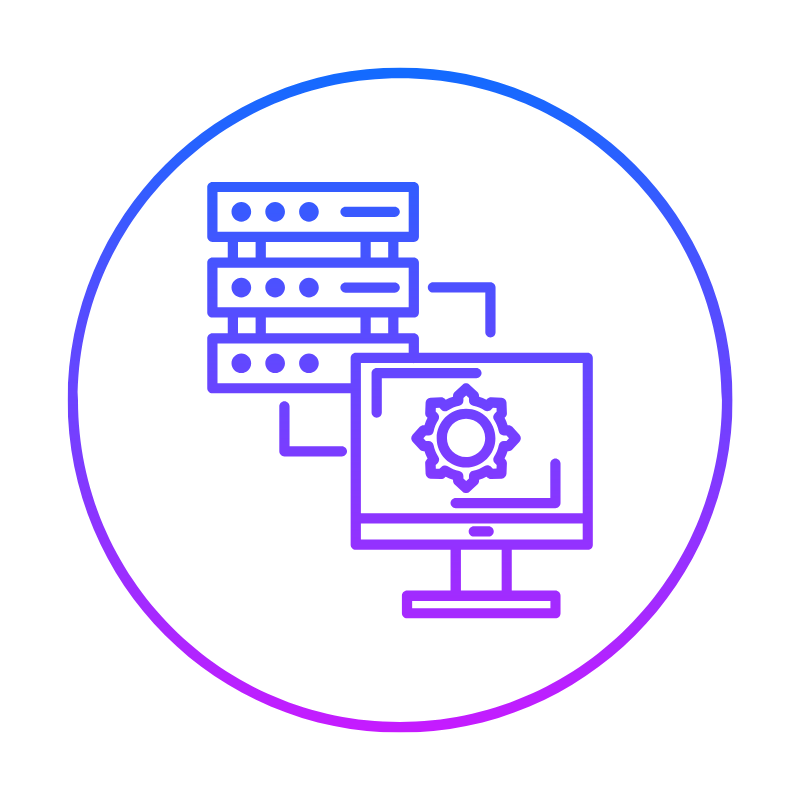Choosing a web hosting provider in the Philippines is one of the most important decisions you’ll make when building a website.
The right web host can ensure your site has the reliability, performance, and support it needs to succeed.
The wrong one can lead to frustrating downtime, slow speeds, and a poor overall experience for your visitors.
So how do you pick the best web hosting service in the Philippines for your particular needs?
In this comprehensive guide, we’ll explore the key factors you should consider:
| Criteria | Description |
|---|---|
| Uptime | Aim for at least 99% uptime offered. Frequent downtime hurts your business. |
| Hosting Type | Shared, VPS, dedicated – pick one aligned with your site traffic and app resources needed. |
| Server Location | Ensure servers are geographically close to your audience for fast speeds. |
| Support | PRIORITIZE 24/7 support with quick response times. |
| Resources | CPU, RAM, storage needs will depend on your site. Pick adequate resources. |
| Security | Firewalls, backups, SSL should be provided. |
| Costs | Avoid overeager contracts and hidden fees. |
By carefully comparing hosts across these criteria, you can confidently choose a provider that offers the right mix of reliability, resources and support to meet your website’s needs.
Keep these factors in mind, and you’ll be well on your way to hosting happiness.
Read on for in-depth tips on evaluating each of these crucial criteria when selecting a web host.
Here are 7 tips for choosing a good web hosting provider in the Philippines:
- Look at uptime and reliability – A good host should have at least 99% uptime, meaning your site will be online and accessible almost all the time. Check reviews to see if the host has a history of outages or downtime.
- Consider the type of hosting – Shared, VPS, dedicated, cloud? The right hosting type depends on your site traffic, app needs, budget etc. Shared is good for new sites, VPS gives more control, dedicated is for resource-intensive sites.
- Check the server location – The closer the server is to your target audience geographically, the faster the site will load. Look for a host with servers near your readers.
- Review support options – What support channels does the host provide? Look for 24/7 phone, live chat and ticket support at a minimum. Fast response times are important.
- Check available resources – RAM, bandwidth, storage etc. Make sure the host can provide enough resources for your site to handle traffic spikes and future growth.
- Security features – The host should use firewalls, regular backups, SSL certificates etc. This protects your site from attacks, data loss, hacking attempts.
- Costs and contracts – Avoid hosts with very cheap plans or long contracts. Look for reasonable monthly pricing month-to-month or annual contracts. Check renewal costs too.
Tip 1 – Look at uptime and reliability
When evaluating a web host, one of the most important factors to consider is their uptime and overall reliability. Uptime refers to the percentage of time that the servers and network of a hosting provider are up and running.
For any professional web hosting service, you’ll want to see uptime of at least 99%. Anything less will result in frequent downtime and access interruptions for your website visitors.
Here are some tips on assessing uptime:
- Check uptime guarantees: Most hosts will promote their uptime, sometimes even providing a guarantee (e.g. 99.9% uptime). This gives you a baseline expectation.
- Read through service agreements: The SLA will give details on uptime, performance guarantees, and credits for any downtime.
- Research online reviews: What are existing customers saying about uptime and reliability? Look for any mentions of site downtime or outages.
- Use third-party monitoring tools: These can track and report uptime over time. Try UptimeRobot or similar for free checking.
- Ask the host directly: Don’t hesitate to contact the host and ask questions about their network and measures to ensure high reliability.
- Check status pages: The best hosts will have a status page showing any current issues. Monitor it for a while to identify patterns.
Having reliable hosting is crucial for any business or organizational site.
Even small amounts of downtime can mean lost revenue and opportunities.
Be sure to thoroughly evaluate uptime before selecting your web host.
Tip 2 – Consider the type of hosting
When it comes to choosing a web host, one of the key decisions is what type of hosting you need.
There are a few main options, each with their own pros and cons:
- Shared hosting – With shared hosting, your website shares server resources like memory and processor power with other sites on the same server. This is the most affordable option but has limited resources. It works well for new sites with low traffic.
- VPS hosting – VPS (virtual private server) hosting gives you a portioned server that is dedicated just to your site. This provides more control and customization but is pricier than shared hosting. VPS plans scale well as site traffic grows.
- Dedicated hosting – For resource intensive sites that need maximum performance and control, dedicated hosting provides an entire server allocated just for your site. It’s the most expensive option but can handle very high traffic loads.
- Cloud hosting – Cloud hosting uses pooled resources across many distributed servers for flexibility and scalability. Resources can be allocated as needed. Cloud-based plans are easy to scale.
When deciding on hosting type, look at your traffic volume, performance needs, and budget.
A new informational site may do fine on shared hosting initially, while an ecommerce site may benefit from having a VPS or dedicated server from the start.
Tip 3 – Check the server location
When picking a hosting provider, it’s important to consider where their servers are located.
Ideally, you’ll want to choose a host with servers that are geographically close to the majority of your website visitors.
Why does server location matter?
It has to do with page load speeds.
Data has to physically travel across the internet network to load a webpage. This happens faster when the physical distance is shorter.
Some tips for evaluating server locations:
- Use a tool like Pingdom or WebSitePulse to test load speeds from geographic regions your readers are in. Compare load times across hosts.
- Ask prospective hosts where their servers are located. Look for servers in your country or continent first.
- Check that they have multiple server locations. Having mirrors around the world allows caching content closer to different audiences.
- For highly global sites, consider using a CDN like Cloudflare to distribute cached page copies worldwide.
- Avoid hosts with single server locations far from your readers – for example readers in Asia using servers based only in USA.
- Look for hosts with detailed region/city selection during signup process. This ensures your site uses nearby servers.
Getting hosting servers geographically closer to visitors can significantly improve website load times.
This results in higher engagement and lower bounce rates for your readers.
Tip 4 – Review support options
When evaluating a web hosting provider, you’ll want to closely review what technical support options are available.
Having access to fast, knowledgeable support can be crucial for resolving any issues that arise.
Here are some things to look at when researching support:
- Support channels – Live chat, phone, tickets? Live chat and phone are best for urgent issues. Email tickets work for non-critical matters.
- Response times – Check reviews and the SLA for average response times. Fast responses mean you get solutions quicker.
- Self-help options – Quality docs, setup guides, FAQs and articles help you troubleshoot or find answers yourself.
- Support availability – Around the clock support is ideal. Limited hours like 9-5 can be problematic for you.
- Premium support – Some hosts offer priority assistance for a fee. This guarantees faster response.
- Community forums – Having an active user community for peer help can supplement the official channels.
- Escalation processes – Make sure there is a way to escalate for urgent, critical issues if needed.
- Technical expertise – Support staff should have the knowledge to address server, DNS, CDN and other web hosting technical issues.
Carefully vetting support will ensure you get assistance promptly when you most need it while using the hosting service.
Tip 5 – Check available resources
When comparing different web hosting providers in the Philippines, it’s important to look at the server resources allocated for your site.
Resources like CPU cores, RAM, SSD storage space, and bandwidth will determine how much traffic your site can handle.
Some tips on evaluating resources:
- Review resource allotments for each plan tier – entry level plans will have limited resources compared to higher tiers.
- Look for providers that allow customizing or upgrading resource allotments (CPU, RAM, storage, etc) for your plan. This brings flexibility.
- Do some estimates on your resource requirements. Factor in traffic growth so you pick adequate resources now.
- For memory and storage, pick hosts that use fast SSD drives rather than slower HDD. This improves site performance.
- Check bandwidth and traffic limitations. Avoid hosts that charge excessive overages for bandwidth usage.
- Evaluate page caching provided. Caching improves performance by reducing database requests and processing.
- Look for hosts with resource monitoring and usage analytics. This allows tuning your plan if needed.
- With shared hosting, resources are shared so pick hosts with lower site density per server.
Choosing a plan with adequate resources for your site ensures fast performance and prevents issues with scaling.
Check allotments closely during evaluations.
Tip 6 – Security features
The web host you choose in the Philippines will play a big role in keeping your site secure.
When comparing hosts, check what security protections and features they offer including:
- SSL certificate – An SSL certificate enables HTTPS and encrypts data. Having one installed should be a standard feature.
- Firewall – Firewalls block unauthorized access. Look for providers with web application firewalls (WAF) for threat detection.
- Backups – Regular automated backups of files and databases guard against data loss from issues like corruption or hacking.
- Server security – The host should keep servers patched and hardened to prevent intrusion. Look for hosts with server level firewalls.
- Uptime monitoring – Monitoring tools that check site availability and performance help detect problems before visitors notice.
- DDos protection – Protection against DDoS attacks that attempt to take a site down by overloading it with traffic.
- Reputation monitoring – Monitoring a site’s IP reputation helps avoid blacklisting that could impact email and site access.
- Access restrictions – Restricting staff access and actions on servers limits insider risks. Multifactor authentication adds another layer of control.
- Audits & compliance – Check if the host undergoes independent security audits and complies with standards like ISO 27001.
Scrutinizing the security measures a host provides gives assurance they can protect your site from modern cyberthreats.
Tip 7 – Costs and contracts
When selecting a web hosting provider in the Philippines, you’ll want to evaluate both the costs of their services and the contract terms they offer.
Some tips regarding costs:
- Compare monthly/annual pricing across similar plans on different hosts
- Check costs for add-ons like dedicated IPs or SSL certificates
- Watch for setup fees, renewal price jumps, or hidden costs
- For critical sites, look for hosts with credits for downtime
- If paying multiple years upfront, make sure they offer a pro-rated refund
Things to review about contracts:
- Prefer monthly terms over yearly contracts when starting out
- Check autorenewal settings – disable if you just want a short term
- Make sure you can downgrade plans easily if needed
- Know cancellation policies – some hosts lock you in for the term
- Look for 30 to 90 day moneyback guarantees in case the host is problematic
To get the best deal, you’ll want to balance costs against the quality of service being provided by the host.
Avoid hosts with very cheap plans or difficult contracts.
Key Takeaways
- Pay close attention to uptime percentages and reliability when evaluating hosts in the Philippines- you want at least 99% uptime.
- Consider your site’s specific needs and traffic levels when deciding on a hosting type – shared, VPS, dedicated, cloud.
- Pick a host with servers located geographically close to your audience for faster speeds.
- Fast, knowledgeable support is crucial – review support response times and channels.
- Check that resources like CPU, memory, storage and bandwidth are adequate and scalable.
- Security features like backups, firewalls, and SSL should be standard – research what’s provided.
- Avoid hosts with overeager contracts and hidden fees – look for reasonable month-to-month pricing.
Conclusion
Choosing the right web hosting provider in the Philippines is an important decision for any website owner.
Rushing into a plan with the wrong host can lead to frustration down the road if you experience frequent downtime, sluggish speeds, or lack of support.
By carefully evaluating candidates based on uptime, hosting types, server locations, support quality, security features and costs, you can confidently pick a provider that will meet your needs both now and as your website grows.
Taking the time upfront to find a reliable host with the right mix of resources, performance, support and security will pay off hugely in the long run with a positive website experience for both you and your visitors.
Just remember – don’t compromise on uptime, support responsiveness, or transparent pricing.
With the right diligence as outlined above, you’ll be well on your way to hosting happiness.
Related:
 Web HostingCost-effective shared hosting solutions
Web HostingCost-effective shared hosting solutions Reseller HostingStart your own hosting business without tech hustle
Reseller HostingStart your own hosting business without tech hustle Affiliate ProgramEarn commission by referring customers to our platforms
Affiliate ProgramEarn commission by referring customers to our platforms cPanel HostingHosting powered by cPanel (Mostly user friendly)
cPanel HostingHosting powered by cPanel (Mostly user friendly) Windows HostingOptimized for windows based-applications and sites
Windows HostingOptimized for windows based-applications and sites Domain SearchFind and register available domain names in seconds
Domain SearchFind and register available domain names in seconds All DomainsExplore and register domain extensions across the world
All DomainsExplore and register domain extensions across the world Domain Transfermove your domain to us with zero downtime and full control
Domain Transfermove your domain to us with zero downtime and full control Whois LookupLook up domain ownership, expiry dates and registrar information
Whois LookupLook up domain ownership, expiry dates and registrar information .com DomainSecure the most recognized domain for global credibility
.com DomainSecure the most recognized domain for global credibility VPS HostingScalable virtual servers. Full root access. Faster speed.
VPS HostingScalable virtual servers. Full root access. Faster speed. Managed VPSNot a tech expert? Choose our fully managed VPS server.
Managed VPSNot a tech expert? Choose our fully managed VPS server. Dedicated ServersGet the full power and complete control of your own physical server.
Dedicated ServersGet the full power and complete control of your own physical server.
